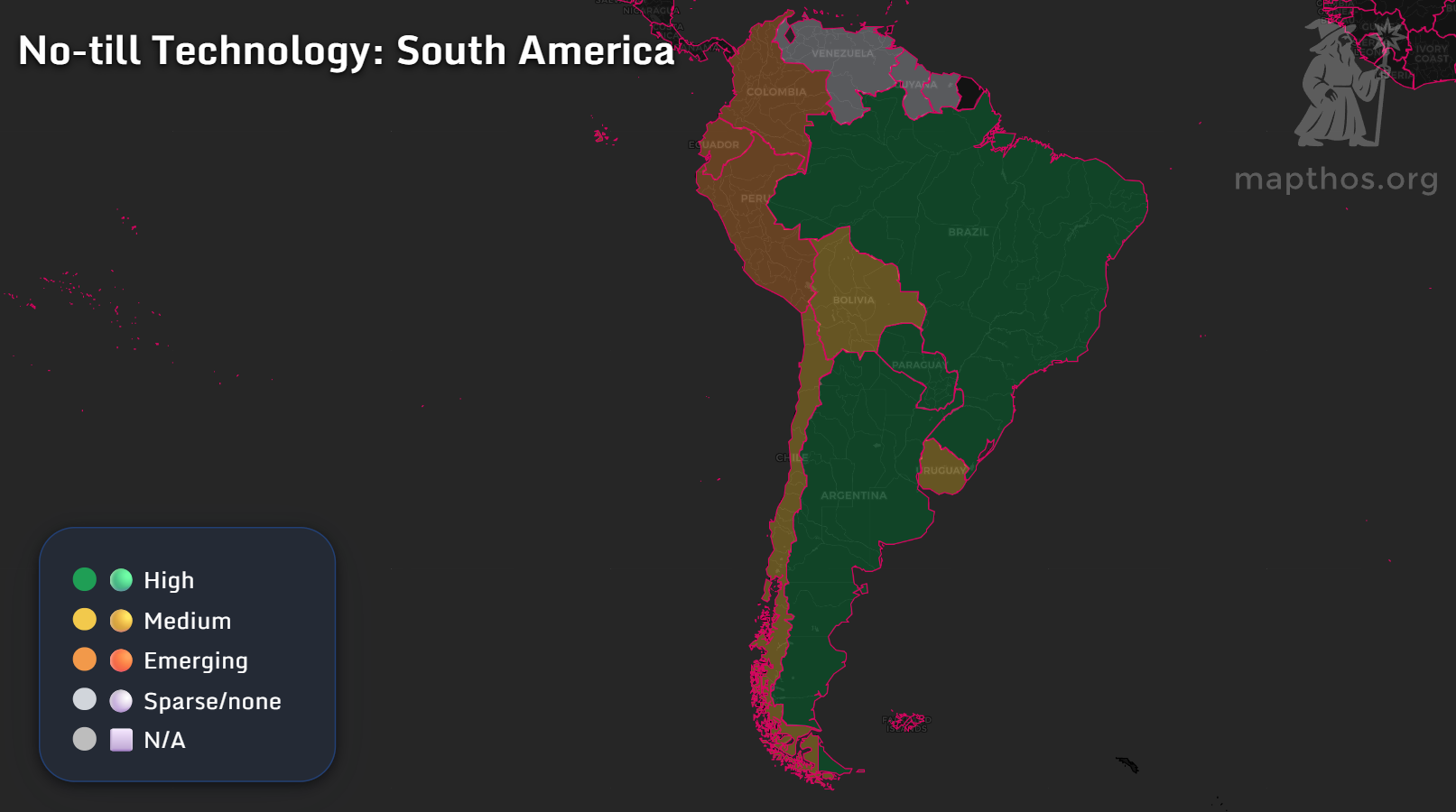🌾 No-Till Superpowers: How the World Rethinks Soil in 2025

So much of the world’s future depends on what happens just beneath our feet. While global headlines chase AI, climate, and space, a quieter transformation is happening in the soil — through no-till agriculture, a method that minimizes disturbance to the earth, locking in carbon and protecting life below.
This isn’t just farming innovation — it’s a global movement redefining how nations feed their people and heal the planet.
🇧🇷 South America: The Cradle of Conservation

In South America, the no-till revolution began decades ago — and never stopped growing. Brazil, Argentina, and Paraguay now rank among the highest adopters of no-till farming in the world. These nations turned once-fragile soils into carbon-rich ecosystems, proving that large-scale agriculture and sustainability can coexist.
- Brazil and Argentina: High adoption, especially across the Pampas and Cerrado.
- Peru and Bolivia: Emerging use, limited by terrain and smaller-scale farming.
- Colombia and Ecuador: Transitioning regions experimenting with conservation practices.
🇺🇸 USA: The Great Plains, Reimagined

America’s Great Plains — once a symbol of overplowing and dust storms — are now home to the world’s largest area of no-till farmland. From North Dakota to Kansas, adoption rates soar, while states like Oregon, Wisconsin, and Indiana show medium-to-high levels of conservation tillage.
- High adoption: Midwest and Plains (North Dakota, Nebraska, Kansas, Montana).
- Medium adoption: Northern states like Minnesota, Wisconsin, and Washington.
- Low adoption: Southeastern states, where soil types and rainfall complicate practices.
🇷🇺 Russia: The Sleeping Giant Awakens

In the world’s largest country, Russia’s agricultural heartland is quietly adopting no-till techniques. From the Volga region to Siberia, green zones of high adoption spread across the steppe — a striking reversal from the soil-degrading practices of the past.
Southern regions like Rostov and Krasnodar show dense clusters of adoption, while the far north remains largely untouched. Yet even modest changes here matter: Russia’s vast acreage means even small percentages translate into massive global impact on carbon retention and erosion prevention.
🇺🇦 Ukraine: The Resilient Fields

Despite years of conflict and disruption, Ukraine remains one of Europe’s leaders in no-till experimentation. Central and southern oblasts — from Dnipro to Zaporizhzhia — show high adoption rates, while western regions are still emerging.
- High: Central and southeast regions
- Medium: West and southwest
- Sparse: Border regions near Russia
🌍 Soil Carbon Champions: The Global Underground Economy

No-till practices don’t just prevent erosion — they lock carbon underground. This global soil carbon map reveals that tropical and temperate regions, from Central Africa to Southeast Asia, hold vast carbon stocks, while colder northern soils (like Russia and Canada) store even deeper reserves.
Together, these layers form the planet’s largest carbon bank — a silent asset in the fight against climate change.
🌱 The New Soil Frontier
What’s remarkable isn’t just the data — it’s the mindset. The no-till revolution connects farmers from Kansas to Kyiv, uniting them through soil, stewardship, and science. It shows that healing the earth can start with a single decision: to stop breaking it.
👉 Explore more at app.mapthos.org
See the world. Map better. Dream big. 🌍✨